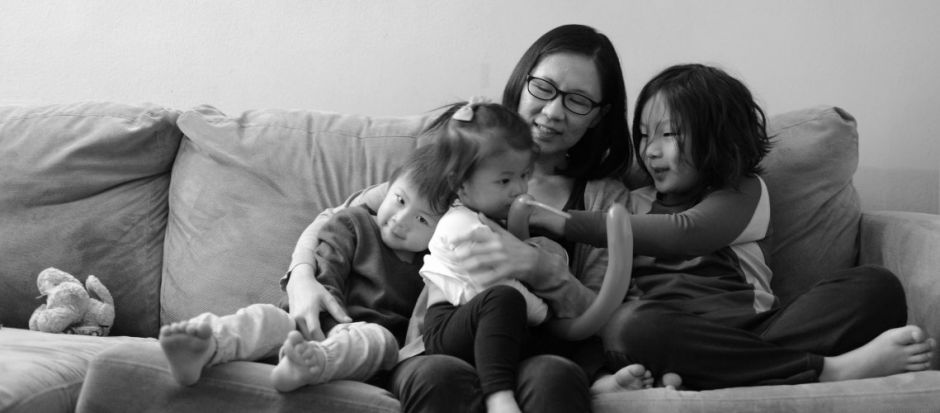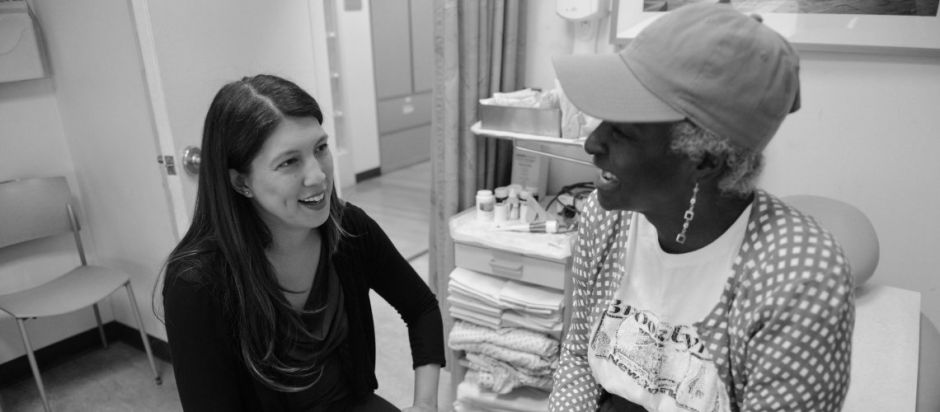All In
A little over a year ago, Dr. Jennifer Downs, MD ’04, PhD ’11, made an exciting discovery while studying the relationship between a parasitic worm and HIV infection in sub-Saharan Africa. But Dr. Downs, an assistant professor of medicine in microbiology and immunology at Weill Cornell Medicine’s Center for Global Health, saw a snag. Despite having promising early data showing that HIV-infected people who carry the worm have greater concentrations of HIV in their blood, causing them to become sicker from AIDS more quickly — and to transmit the virus to others more easily — the necessary follow-up studies would require her to spend a good deal of time in her New York City lab, a full day’s travel away from where she and her husband are raising their three children in Mwanza, Tanzania.
Enter the Junior Faculty Fellowship Fund, a program established in 2015 with a $1.25 million gift from the Anna-Maria and Stephen Kellen Foundation. It provided Dr. Downs and four other exceptional female scientists — all of whom have primary child care responsibilities — $50,000 each for research expenses. Dr. Downs, 38, used that money to support her new line of research and hire a lab technician in New York, whom she oversees remotely. “It’s phenomenal,” says Dr. Downs, also the Friedman Family Research Scholar in Pediatric Infectious Diseases. “The Junior Faculty Fellowship grant was the perfect opportunity for me.”
Though junior male faculty are also eligible to apply, the grant was developed in direct response to the stark gender discrepancies that exist in senior positions in academic medicine and research. According to national figures from the Association of American Medical Colleges, the equal gender representation that’s present at the student and resident levels becomes more and more disparate in senior positions, with women only accounting for 24 percent of division chiefs, 15 percent of department chairs, and 16 percent of deans. Weill Cornell Medicine has a higher rate of female senior/ associate deans — 52 percent — but the remainder of its statistics are in line with the AAMC findings, or in some categories slightly better. “Something critical is happening between the early career, assistant professor level and the associate professor level that is disproportionately affecting women,” says Dr. Randi Silver, associate dean of the Weill Cornell Graduate School of Medical Sciences and professor of physiology and biophysics, who oversees the grant. The drop-off, she notes, is likely related to having and raising children, which can limit one’s ability to work long hours and pursue outside funding. “The grant is targeting junior faculty — especially women, who tend to be primary caregivers — at a crucial point,” Silver continues, “which makes this a unique and much-needed award.”
For the five physicians and scientists who received the award in its inaugural year, the funding ultimately provided them with time that they might not otherwise have had to publish and solidify their reputations at a moment in their careers when such exposure is critical. Dr. Downs notes that such support has allowed her to push back against the time crunch that squeezes working mothers, so she can be both an exceptional physician scientist and a great mom. “These are competing interests, and I’m always trying to achieve balance,” says Dr. Downs, who was in California when the photographs of her fellow grantees were taken in New York for this story. “It’s important for me to model for my children that women can be smart and accomplish things and have meaningful impact in their world.”
Silver also envisions that these awardees — along with the just-announced 2017 class of recipients — will model what life as a successful physician or scientist looks like to younger generations. “The hope is that we’ll be able to support a cadre of women and build a community who can act as mentors to the younger generations coming in,” she says. “It’s a win-win all around.”
Dr. Jihye Paik, Assistant Professor of Pathology
My lab studies aging, longevity, and cancer. We’ve found that the absence of transcription factors known as FOXO, or proteins that regulate how genes are expressed, is associated with faster aging and earlier death. If we can better understand this, we hope we’ll be able to promote healthy aging and ideally extend lifespans in people.
I’m in year six as an assistant professor. I need to gather things together for consideration for promotion to associate professor, which involves serving on committees, interviewing MD-PhD and graduate school applicants, teaching, getting external funding, and publishing enough. I always wish I’d have a little more time to read and catch up. If you miss newly published papers, you feel behind. Some weekends I wish I could spend time on manuscripts and grants, but I have to finish them on Friday and move on.
During each of my pregnancies, I had morning sickness every day. Even if you don’t have post-partum depression, with all the hormones during pregnancy and lack of sleep for a year after the birth, you have difficulty concentrating. If your brain doesn’t function properly you cannot perform at your best. So between my three children, that was six years — that’s a down time in my research. It’s something for people to consider before they judge women scientists about productivity. But the pleasure I have with my kids, I wouldn’t exchange for anything else.
Having kids gave me a strong reason to become a better scientist — and a better person. Nathaniel, my 8-year-old, is my inspiration. He reminds me of who I am. He says, ‘My mother is a scientist — she knows everything. I hope I become like her.’ Before he was born, everyone liked me, my mentor thought I did great work, and I was very proud of it, but I never felt I wanted to be a better person. My son makes me feel I should be a better person because my name will be associated with his.
Dr. Heather Yeo, Assistant Professor of Surgery and of Healthcare Policy and Research
When I was in my surgery residency, two women in the year ahead of me left training, and it really was upsetting to me. It made me wonder: As a profession, are we not supporting women enough, or is it that I’m getting a distorted view of things? So I started working in conjunction with the American Board of Surgery to look at dropout in surgical training as well as fit and support. Recently, we have found that women have a higher dropout rate — 23 percent versus 17 or 18 percent for men. But if you start looking at other factors, it’s more complicated than gender. Some of it may be support structures: For a man in training, being married is protective, and for a woman, being married or having children can add additional stress depending on your support structures. Without a change in the rate of women becoming full professors, it’s going to take 121 years for us to reach parity at the highest levels of academic surgery. My hope is to start thinking about ways that we can improve that.
I think that there is, particularly in surgery, a toughness component that surgeons feel that it is important to portray, and you don’t want to say you need help from people. But if you look around, many of your male colleagues are getting help from other people. As a working mother, you need support, just like working fathers do. You have to not be ashamed to take it sometimes.
There’s certainly a lot of implicit bias, but as a woman, you’re also pulled in a lot of directions. I remember driving in the car when my daughter was about 2 and a half and could just speak and I said to her, “I love you, baby,” and she goes, “but you’ve gotta go to work.” I realized that is what she must have heard me say before. It makes you think about how you prioritize things.
Still, my husband once said to me that the best thing you can do for your child is to be a strong woman role model. His support has really helped me. My daughter is now applying for middle schools. The topic for one of her application essays was, “If you could create a 21st century Mount Rushmore, who would be on it and why?” I felt moved that she put me on it and said it was because “my mom is a woman and a scientist and she helps take care of people with cancer.”
As a woman who’s in an unconventional career, you don’t always feel your confidence in yourself. To see my daughter’s confidence and feel like I maybe contributed to that just by the expectation of what she saw is very rewarding for me.




